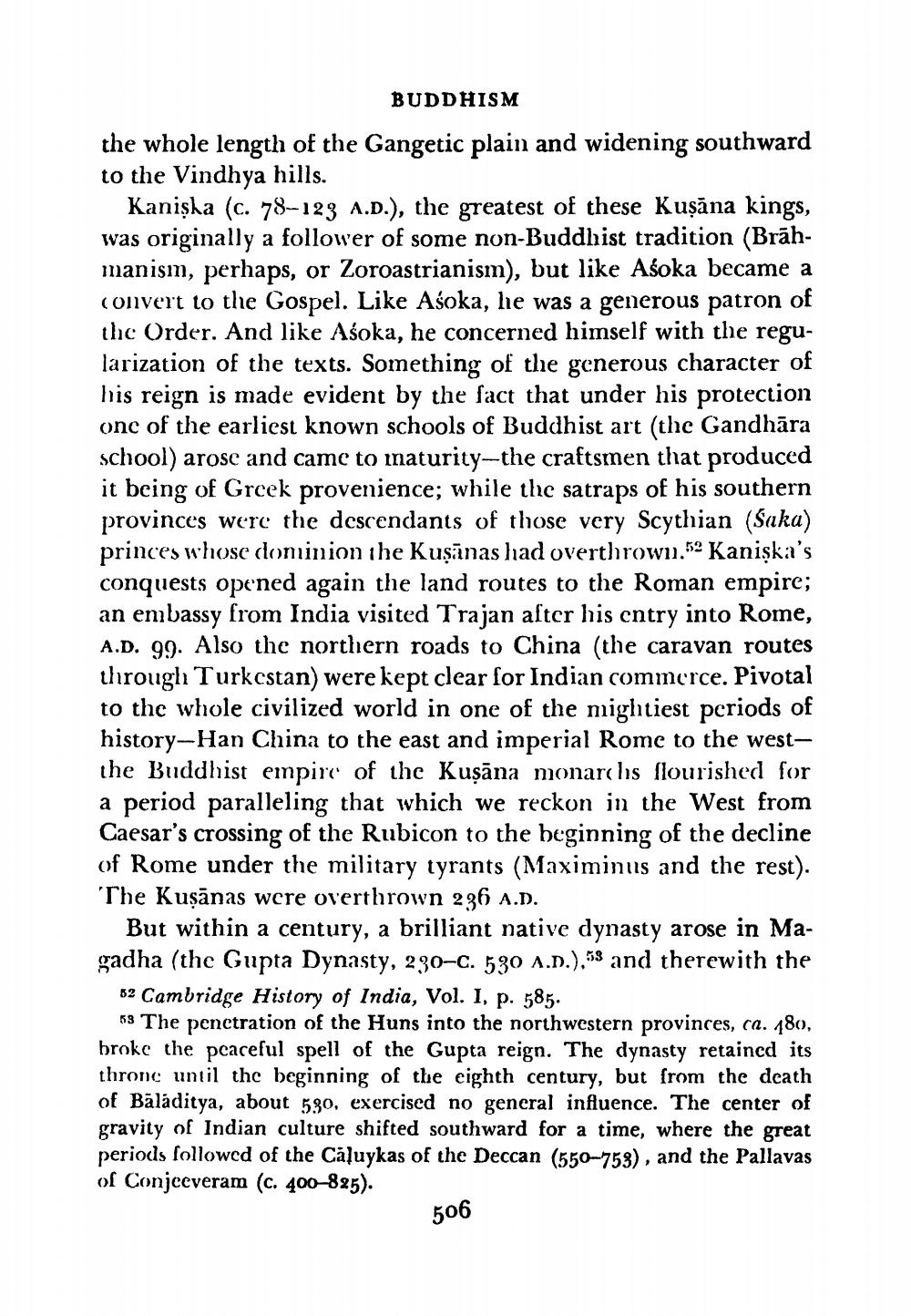________________
BUDDHISM the whole length of the Gangetic plain and widening southward to the Vindhya hills.
Kanisha (c. 78-123 A.D.), the greatest of these Kuşāna kings, was originally a follower of some non-Buddhist tradition (Brāhmanism, perhaps, or Zoroastrianism), but like Asoka became a convert to the Gospel. Like Aśoka, he was a generous patron of the Order. And like Asoka, he concerned himself with the regularization of the texts. Something of the generous character of his reign is made evident by the fact that under his protection one of the earliest known schools of Buddhist art (the Gandhāra school) arose and came to maturity-the craftsmen that produced it being of Greek provenience; while the satraps of his southern provinces were the descendants of those very Scythian (Saka) princes whose dominion the Kuşānas had overthrow1.52 Kaniska's conquests opened again the land routes to the Roman empire; an embassy from India visited Trajan after his entry into Rome, A.D. 99. Also the northern roads to China (the caravan routes through Turkcstan) were kept clear for Indian commerce. Pivotal to the whole civilized world in one of the mightiest periods of history-Han China to the east and imperial Rome to the westthe Buddhist empire of the Kuşāna monarchis flourished for a period paralleling that which we reckon in the West from Caesar's crossing of the Rubicon to the beginning of the decline of Rome under the military tyrants (Maximinus and the rest). The Kuşānas were overthrown 236 A.D.
But within a century, a brilliant native dynasty arose in Magadha (thc Gupta Dynasty, 230-c. 530 A.D.)," and therewith the
52 Cambridge History of India, Vol. 1, p. 585.
59 The penctration of the Huns into the northwestern provinces, ca. 480, broke the peaceful spell of the Gupta reign. The dynasty retained its throne until the beginning of the eighth century, but from the death of Baláditya, about 530, exercised no general influence. The center of gravity of Indian culture shifted southward for a time, where the great periods followed of the Caluykas of the Deccan (550-753), and the Pallavas of Conjceveram (c. 400-825).
506




